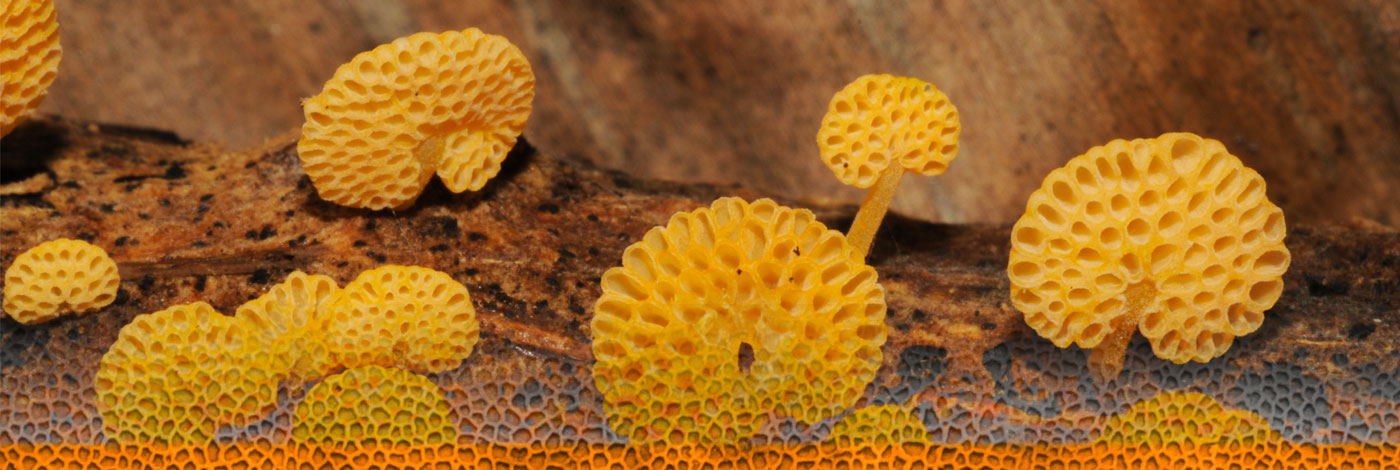
 Cryptogamie, Mycologie
30 (4) - Pages 377-403
Cryptogamie, Mycologie
30 (4) - Pages 377-403The third part of this series surveys 61 coelomycetes described before 1940 with holotypes originating from the Middle East. The taxa concerned were examined in relation to their authors, dates of publication, collectors and original locality. The taxonomic positions were updated following the current taxonomy of the fungi concerned. The two major pre-1940 mid-eastern surveys by Bubák (1914) and Reichert (1921) were also scanned for names of known taxa yet unreported for the area and, for the first author, of novel coelomycetes originating from present-day Turkey, not considered as part of the Middle East.
The oldest names Gloeosporium schweinfurthianum and Sphaeropsis calotropidis were introduced by Thümen around 1879, upon examination of Egyptian specimens sent to Berlin by Schweinfurth. Two additional taxa were described before 1900 while none was introduced in the first decade of the 20th century. Most were issued in the second decade of the same (78.3), thus the contribution of the next two decades was only 15.0. The protologues of the taxa concerned were elaborated by a few mycologists from Austria, Germany and Italy. Most taxa were described as species of known genera; only four were considered as varieties or forma of known species. The genus Basiascella was proposed for B. gallarum from Irak, currently regarded as a later synonym of Piggotia ulmi. The new coelomycetes developed on green plants collected by Europeans residing in the Middle East or botanists travelling in this area. The original localities of collections are now situated in Egypt, Irak, Libya, Palestine and Syria.
About half of the new coelomycetes originated from Libya. These 26 novelties were all described by Saccardo and Trotter within a relatively short period between 1912 and 1916, following the Italian occupation of this country (1911-1942). The 18 Iraki taxa were introduced by Bubák in 1914 based on specimens originating from the Handel-Mazzetti expedition to the Orient in 1910; the same applies to the 7 Syrian coelomycetes. The Egyptian species were characterised by Reichert (6 spp.), Thümen (2 spp.) and F. Tassi (Diplodia aegyptiaca); the relevant material was collected by German travellers or residents such as Ehrenberg, Schweinfurth or R. Muschler. Only a single species, Septoria apetala, originates from Palestine.
According to the updated taxonomy of the early described coelomycetes, they belong to 26 genera. Seventeen taxa belong to Coniothecium and Hendersonia, two genera which, like most of the other genera, have not been monographically treated. The original status of the five Phoma species was recently re-assessed; this has not happened for the four respective species of Camarosporium, Microdiplodia and Rhabdospora. Five other genera have either three species (Diplodina and Macrophoma) or two species (Phyllosticta, Placosphaeria and Septoria). The remaining 15 genera are each represented by a single species. This distribution clearly indicates that all the coelomycetous novelties are the result of casual discovery rather than the outcome of a detailed survey of the group.
All the pre-1940 novel coelomycetes authored by German-speaking specialists have type material dating before World War I. The holotypes of the 6 Egyptian names introduced by Reichert in 1921 were available in Berlin prior to this war. The two Iraki and Syrian species named by Petrak in 1939 were based on material collected by Ehrenberg or by K.H. Rechinger. The Libyan taxa described by Italian specialists have specimens gathered just few years before or after 1914; only Diplodina smyrnii was collected in 1922. World War I apparently brought German interest in the Biodiversity of the Middle East to an end. It also distinctly affected the interest of other European experts with regard to the distribution of local coelomycetes.
In the two major pre-1940 surveys by Bubák and Reichert, data on 10 known coelomycetes originating from Egypt (8 spp.), Irak or Syria (1 sp. each) have been found. Their taxonomic positions were updated as well. Bubák's report also encompasses protologues of 20 new coelomycetes from present-day Turkey including the types of two new genera; all were also taxonomically critically updated. In total, 91 species are listed and treated in this survey. Finally several of the taxa described before World War II are only known from their type collections. The regional exploration of this major group of economic importance definitely needs to be resumed.